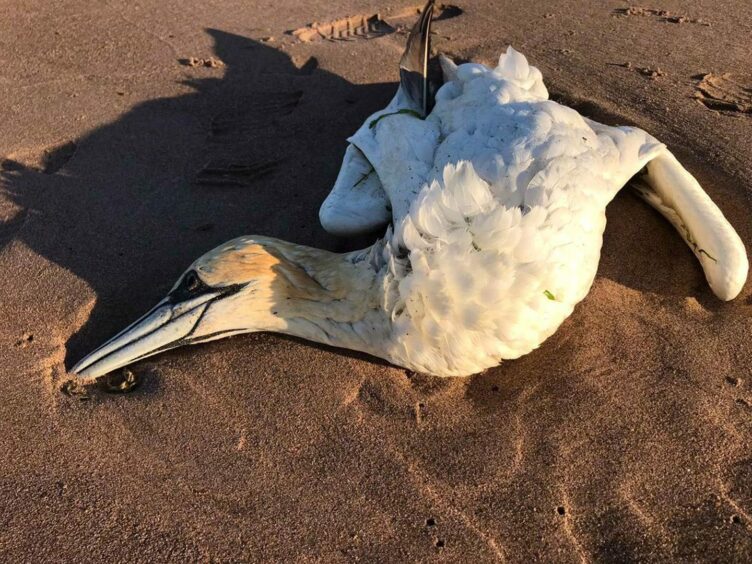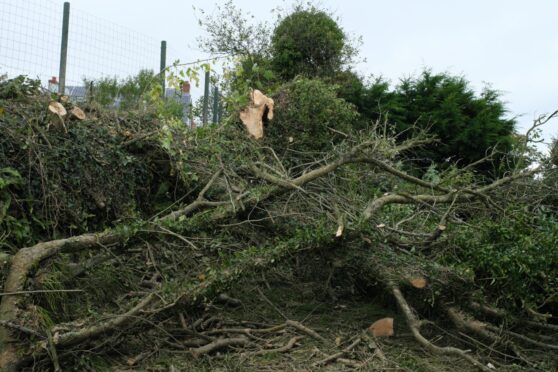In April 2006 a dead swan in Fife’s East Neuk set off a bird flu media frenzy.
The limp feathery carcass of a migrating whooper swan was the first UK case of H5N1 avian flu in the UK. And it happened to wash up in the sleepy village of Cellardyke.
Hysteria followed.
National media drove up in vans with satellite dishes on their roofs. The BBC sent news anchorman George Alagiah to the scene.
Dead birds washing up on the beach are now, sadly, a common sight.
But there is nowhere near the same level of hysteria.
This is despite the fact the disease can jump to mammals, including humans.
However you have to be very unlucky to catch a circulating strain of H5N1.
Just four people worldwide are known to have been infected between December 2021 and December 2022.
But in April 2023, the first human death as a result of bird flu was reported.
So what does that mean for us?
Risk to human health still ‘low’
“This is still a bird virus that wants to be in birds,” says Professor Ian Brown from the Animal and Plant Health Agency (Apha).
Professor Brown is speaking after reports of avian flu infecting wild animals such as otters and foxes.
Two otters in Fife were among the animals identified with the disease last year.
But scientists at Defra (the UK Government’s Department for Environment, Food & Rural Affairs) say this does not amount to a “spillover” which could cause the next human pandemic.
“These animals, these are wild mammals that scavenge on dead and sick birds – these mammals are being exposed to a lot of viruses,” says Professor Brown.
“These are dead end infections, they cannot currently travel between the mammals.”
NatureScot has now released a report setting out the scale of the threat of avian flu.
The experts warn that bird flu “may threaten the very survival of some species” in Scotland.
Some of the most seriously affected species include barnacle geese, northern gannets, terns and large gulls.
The research paints a worrying picture, stating that there are few tools that can control or reduce a HPAI infection once it gets hold of a wild bird population.
The virus can also mutate very quickly and adapt to different species.
The report concludes that long-term conservation measures will be the most effective tool against the virus.
Different rules may also be introduced when it comes to human visitors coming into direct or very close proximity to birds.
Avian flu back in Fife again
Bird flu is always circulating in wild animals.
However, the current outbreak has been described as the biggest to hit the UK.
Last summer, it was clear something was badly wrong when huge numbers of birds including gannets, gulls and guillemots were found dead on beaches across Fife and Tayside.
Bird flu caused huge losses at the Bass Rock’s colony of gannets.
And the Isle of May in the Forth was closed to visitors for five weeks as a precaution.
The spread to captive birds was inevitable.
In December last year, an Angus farmer was heartbroken when she was forced to cull 100 hens and ducks.
Birds at farms near Crieff, and Ladybank and Crossgates in Fife, have since suffered the same fate.
Meanwhile, sporadic cases across species of wild birds continue.
In recent weeks, a barn owl and a sparrowhawk were found to have succumbed to the disease in Perth and Kinross.
Overreaction blamed on media
Back in 2006 Scotland’s environment minister at the time, Ross Finnie, said there had been an overreaction to the Cellardyke incident.
Specifically, by the media reporting on it.
However, there is still concern about what this current outbreak of bird flu will do next.
It has already devastated sea bird colonies.
Commercial poultry farmers have also seen thousands of birds culled.
A NatureScot spokeswoman says cases of mammals scavenging on dead birds and succumbing to H5N1 are “unusual”.
She adds: “The risk of the H5N1 strain to non-avian UK wildlife remains low.”
But she urges members of the public to remain vigilant. The outbreak is not over yet.
“If you find a dead animal of any species, please don’t pick it up.
“Carcasses may present health risks and are best left alone. Instead, note where you saw the dead animal and contact your local NatureScot area office for advice.”













Conversation